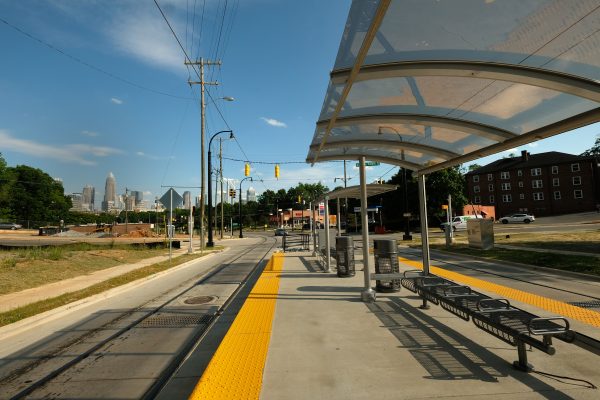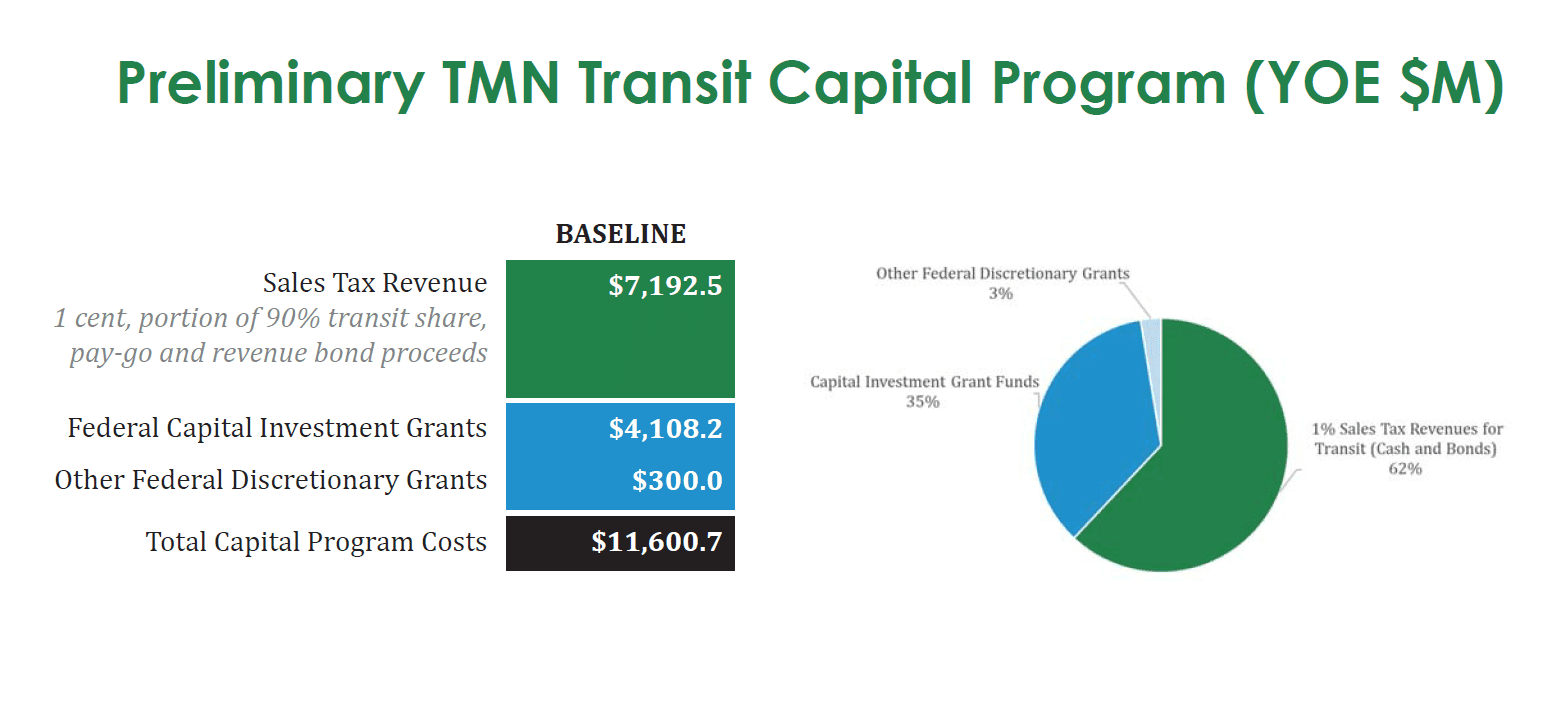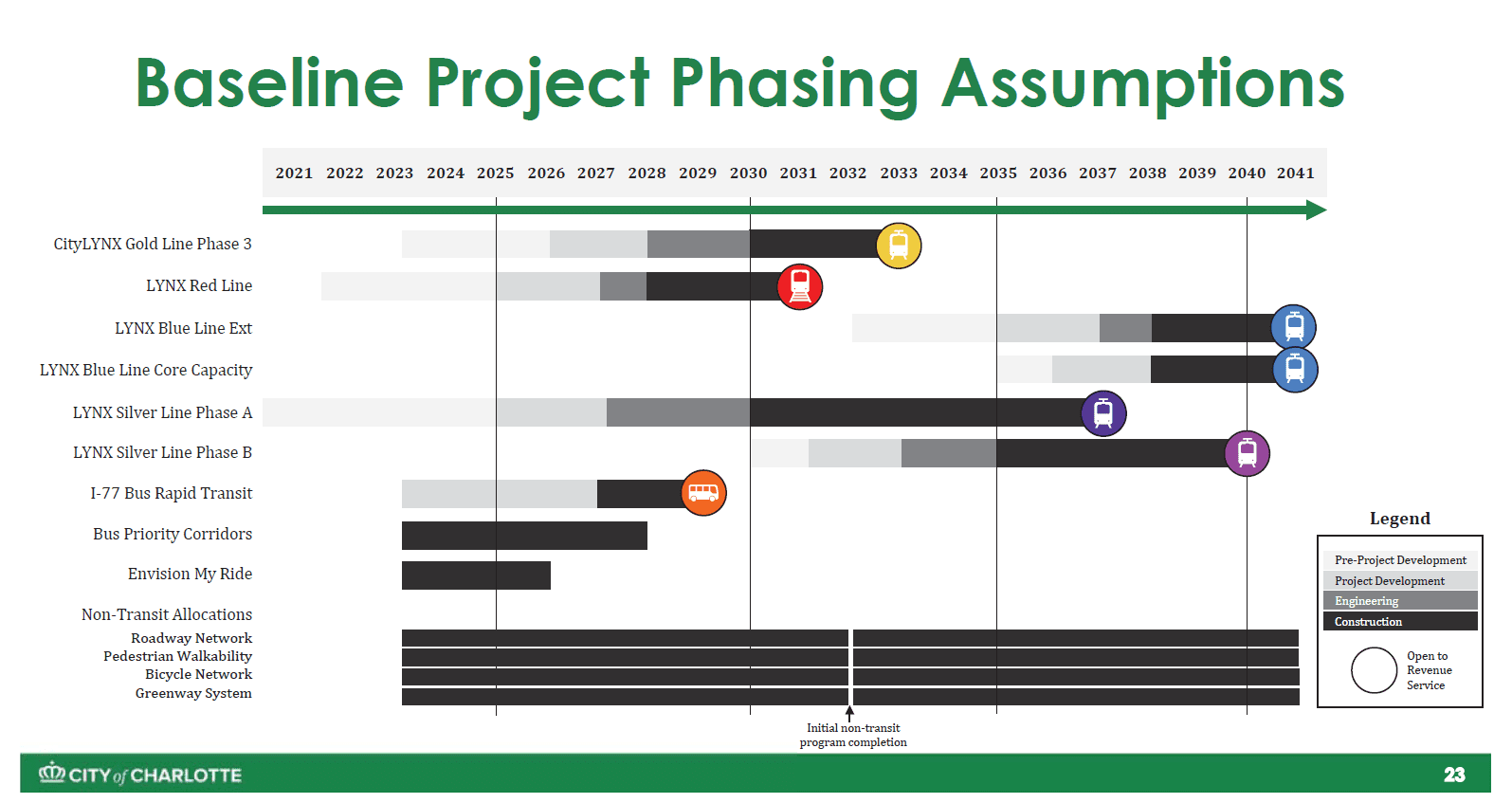Charlotte’s transit future comes into focus, but big questions remain

After the City Council narrowly approved the 2040 plan, Charlotte leaders are turning from questions of how we grow to another key part of the city’s future: how we move around.
Ambitious transit plans that call for a new sales tax funding the Silver Line east-west light rail, the stalled Red Line to the north, and a host of greenway, bicycle and road improvements have been discussed for a year. This month, planning staff have started to bring those discussions to a more concrete level, with specifics about how much different projects are expected to cost, when transit lines might be complete, and how much, exactly, the federal government might kick in to help pay for it all.
A few major themes have emerged: The region’s transit lines will take longer to complete than initially anticipated, with completion dates well into the 2030s. They’ll also cost more than initially thought, though, as consultants stressed numerous times at a City Council meeting on Monday, those costs are expected to change. And how — or whether — the region beyond Charlotte and Mecklenburg County participates is still an open question.
With the Charlotte Moves plan slowly making its way closer to reality, here are four big question marks to keep an eye on moving forward:
-
How much will it cost?
The original Charlotte Moves task force came up with a ballpark estimate of $8 billion to $12 billion, with half the cost coming from a local sales tax and half from state and federal grants. Consultants on Monday presented a new scenario Monday with a new price tag: $13.5 billion. Of that total, 90% would be for mass transit with 10% for roads, greenways and other modes of transportation.
The amount of outside funding will also change. Now, federal grants are expected to make up just about 35% of the total, with the bulk of the funding coming from the sales tax. That makes winning approval of the full one-cent sales tax — which the state legislature would have to allow Charlotte to put on the ballot in 2022 to win voters’ support in a referendum — even more crucial.
But, as the consultants working on the plan stressed Monday, cost estimates will change. The plan is decades-long, cost increases are unpredictable and big infrastructure plans frequently stretch their budgets.

-
How much regional involvement?
One of the big selling points for the Silver Line is that, for the first time, it would cross county lines, with stops in Union and Gaston counties. The Charlotte Area Transit System is also exploring extending the Blue Line light rail north to Cabarrus County as well as south through Pineville and Ballantyne, and the Red Line could (if it gets built) go to Mooresville.To build regional support, the Charlotte Regional Business Alliance Janet LeBar is conducting an economic impact study across the greater 15-county region. And the Centralina Regional Council is conducting its own, parallel planning effort called Connect Beyond to design a regional transit system, likely bus-based.
Building a regional system raises another funding-related question, however: Who will pay besides Charlotte? Charlotte Mayor Vi Lyles said Monday that the local sales tax would only fund projects within the county.
“What’s in Mecklenburg would stay in Mecklenburg,” Lyles said.
Council member Ed Driggs raised the possibility of whether a regional authority, with its own taxing power or revenue stream, might make sense. City Manager Marcus Jones said that idea is under exploration.
“That’s one of the issues we’re discussing,” Jones said. “When you start to have a project outside the city of Charlotte, you don’t want to carry that on (the city’s) own full faith and credit.” -
How long will it take?
The original plan was to build all of Charlotte’s new transit lines by 2030. The Charlotte Moves task force assumed all the transit plans could kick off at the same time. But it’s now clear that it’s going to take a lot longer than originally planned to complete the city’s vision.
“The reality is…we wouldn’t get all of these projects approved for federal funding on day one,” Jones said Monday. “This is a more realistic look.”
Under the new timeline, assuming the sales tax can be collected starting 2023, some bus programs, roadway improvements and greenway construction could open in the 2020s. But rail — the big-ticket items — would be more than a decade away. The Red Line could open in 2031 (though there’s been no sign Norfolk Southern will allow passenger trains in its rail corridor), the next phase of the Gold Line streetcar could open in 2033, and the Silver Line would open in two phases — in 2037 and 2030. The Blue Line extension could open in 2041.

-
What else goes into it besides the rail?
“Charlotte Moves was never simply about transit lines,” Jones said on Monday. “It’s much more than the transit lines.”
It’s a point that city leaders have made repeatedly — the mobility plan would include better bus service, improvements to congested roads, more greenways, bicycle lanes and sidewalks. Of the total cost, $1.9 billion would be earmarked specifically for non-transit initiatives. That includes 115 miles of new greenways, 75 miles of bike lanes, 60 miles worth of roadway improvements and 150 miles worth of pedestrian infrastructure. But a detailed project list and timelines haven’t been released yet, so it’s tough to say exactly what will be included, and when it might be built.
Disclosure: The Urban Institute is a participant in the economic impact study around regional transit plans being carried out by the Charlotte Regional Business Alliance.